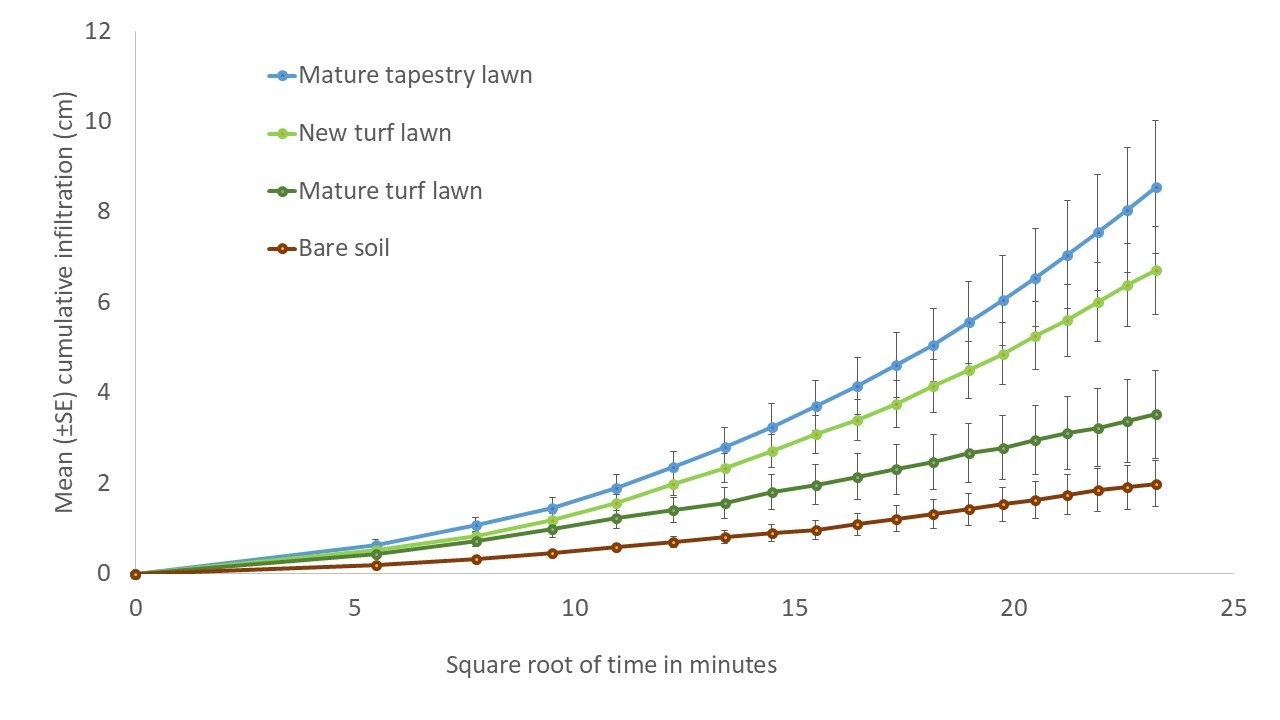During the grass-free lawn research study it was noticed by the University Head of Grounds that while the grass lawns remained saturated after heavy rains that T-lawns tended not to.
A subsequent study on the local loamy soil (Hurst 841b) showed that water infiltration was significantly faster in T-lawns than in grass lawns or bare soil.
The most likely reason is due to the type of plants used: Forbs (non-grasses).
Lawn grasses tend to be shallower rooted and more fibrous than forbs, they can also produce thatch that needs to be removed by lawn care techniques such as scarification or power raking.
Thatch can act as a barrier to water infiltration, and grass lawns may require manual aeration via fork tines or mechanical aerators to overcome this barrier.
T-lawns use mowing-tolerant forbs (non-grasses), do not produce thatch and have a wide diversity of rooting forms and rooting depths, allowing water to infiltrate into the soil up to 3 times faster than bare ground. No scarification or power raking required.
Actually, scarification should be completely avoided, it damages T-lawns.











